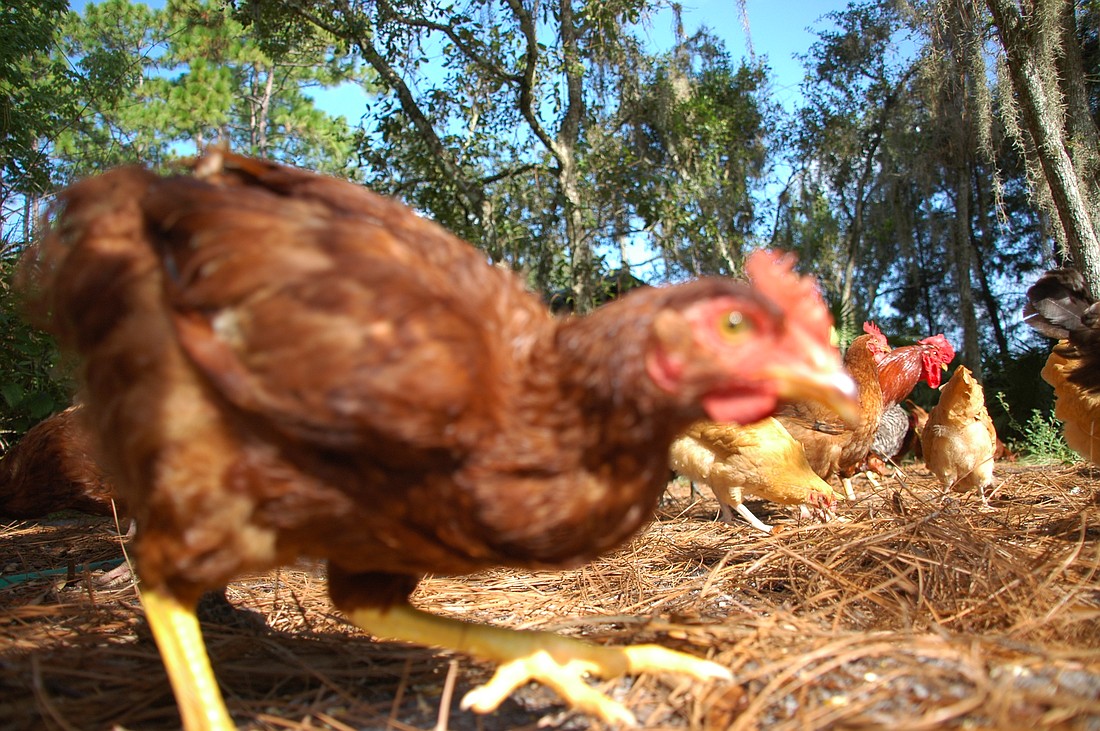- April 22, 2024
-
-
Loading

Loading

This past weekend, we held a “Raising Chickens in Central Florida” workshop at my Sundew Gardens. The surprisingly large response had me worried we might have a Woodstock on our hands. Luckily, a Sunday morning timeslot generated a lot of no-shows on our RSVP list. Don’t worry, we will hold a similar event in the spring.
Each municipality has its own zoning rules and regulations concerning residential flocks of poultry. From the extreme of Winter Park’s zero tolerance (then what about all those noisy peacocks?) to Oviedo’s downtown iconic herds of roosters, the body of laws seems to be incoherent at best. No wonder there is such a grassroots level of citizen action to enlighten community lawmakers all across the county. The many efforts at changing these ordinances have met with a mix of results.
The basics include a predator-secure coop, a source of pullets (female chicks), food, water, manure management and egg collection. A flock consists of at least three hens. Classic varieties of egg-laying hens include: Rhode Island Reds, Plymouth Rocks, Wyandottes, Orpingtons, Faverolles and Cochins. Each variety of chicken has its own personality and strengths. The docile ones have had a hard time fending for themselves in my free-range wilderness. The hardy varieties listed should produce well for most local backyard farmers.
The ability of a flock of hens to produce quality food while linking the various systems of the homestead is astounding. The price of chicken feed has doubled in the past year. Supplement high-protein feed and cheaper grain scratch with kitchen scraps, garden weeds and spoiled crops such as bug-bitten tomatoes. Scatter the manure around the lawn to create a neighbor-envious landscape. A “chicken tractor” is a moveable coop, allowing an enclosed flock to engorge on a rotating buffet of fresh pasture or lawn.
Predators, not disease, are a flock’s biggest threat. The coop should both keep the hens corralled and the marauders at bay. Raccoons, dogs, possums, bobcats, coyotes and hawks all consider chicken tasty prey.
My poultry efforts concern mainly egg production. Hens start laying several eggs each week when they reach 8 months old and then continue for several years. Roosters are not necessary for egg production, and they create their iconic noise and can upset the hens with their constant need of sexual gratification. But oh, those eggs. It’s difficult for me to be critical of the fruit of my own labors, but my homegrown eggs are better than any store-bought hen-fruit you’ll ever taste.
Who is Carey?
Tom Carey is the owner of Sundew Gardens, a you-pick gardening business in Oviedo. Visit the Sundew Gardens Facebook page.